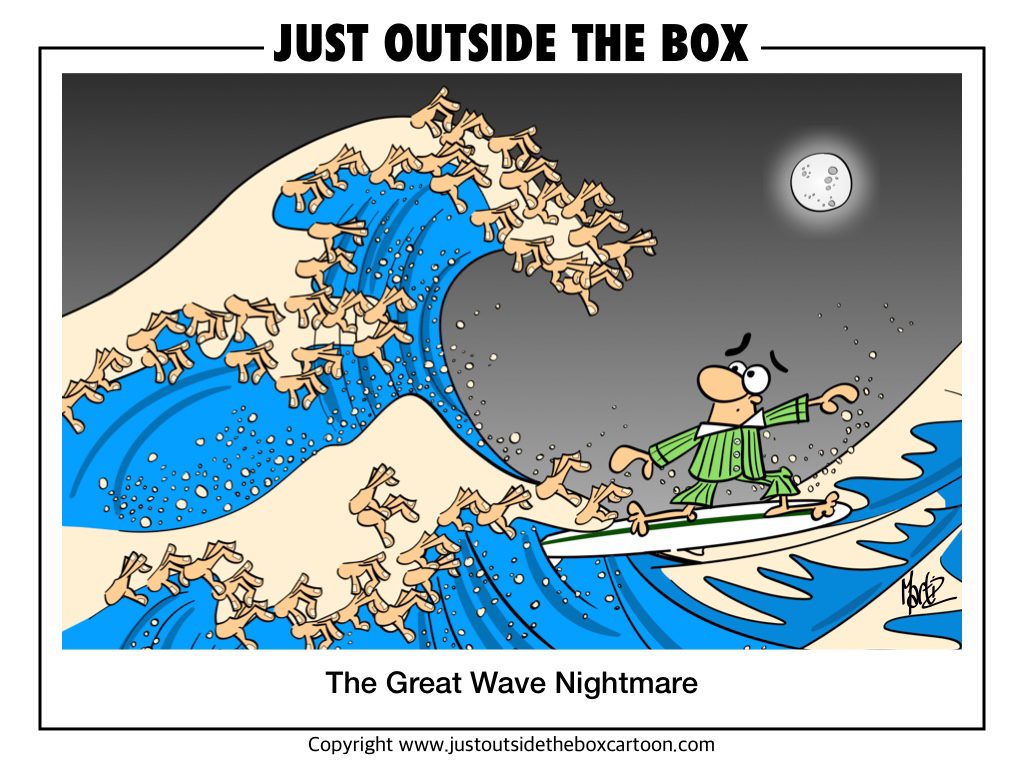Just having a bit of fun with the famous woodblock print, The Great Wave off Kanagawa, by the nineteenth century Japanese artist Hokusai.
Japanese woodblock printing involves the artist’s final sketch being glued to a piece of wood, typically cherry. The horishi (block carver) then carefully carves away the line work to create a relief of the former art work, which is destroyed (or rather removed) during the carving process. This process is repeated for each colour, resulting in a series of blocks, ready for the surishi (printer) to then rubs with paint for printing. This process enables a number of prints to be made, but is limited by the life of the wood; typically 5,000 prints.
So the end print is a collaboration between artist, carver and printer. Interestingly, the ownership of the final work belonged to the hanmoto (publisher), who could do as he wished with the blocks and prints.
I love this print for it’s line work and limited use of colour, but it was the curling waves that inspired me to draw this cartoon.

It’s got me wondering what exactly all those hands want… Great cartoon!
Mmm, never thought about that, makes me wonder too. That’s the thing about nightmares/dreams – trying to make sense of them
Thank you for the information, Marty. This is great. I like the cartoon. It’s beautifully drawn yet spooky at the same time.
Hi Danny, Glad you like the drawing. It was a fun thing to do with all those creeping hands. The original print has a strong blue palette, but I felt that it needed a bit of a night time grey theme happening in the background to provide greater contrast to poor pyjama man in the middle of his nightmare.